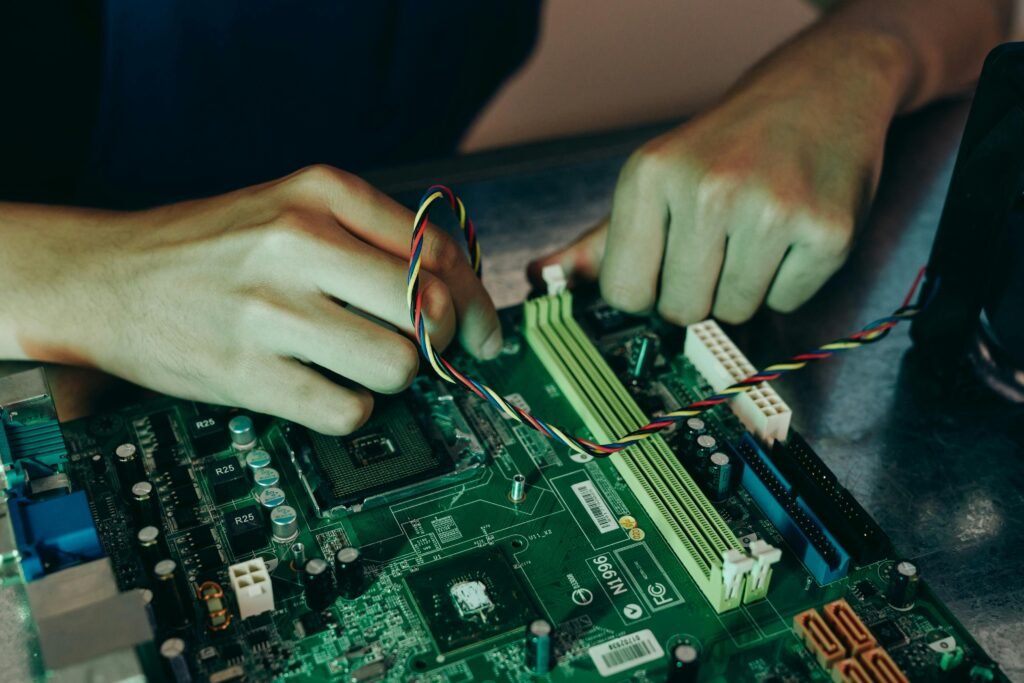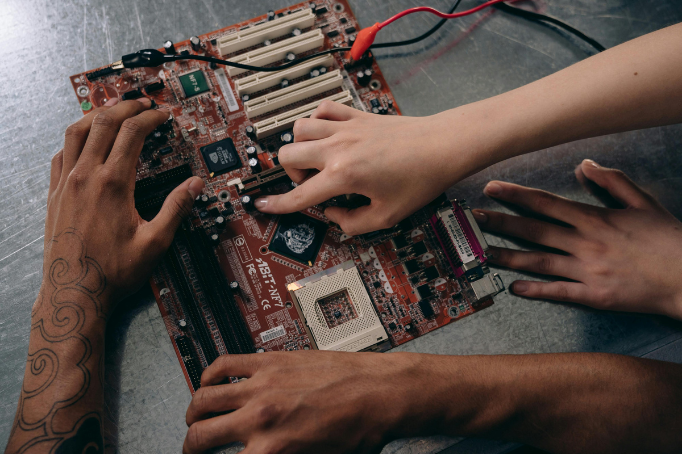Over the past few years, the drive towards efficiency has hit the field of electronics, particularly with the use of smart technologies prominently influencing the design and functionality of various electronic gadgets. In-home automation applications, smart home gadgets, wearable devices, IoT systems, and other smart devices are implementing power efficiency solutions for increasing battery life, decreasing power consumption, and practising sustainable technologies.
One such technology that is central to executing this process is the Real-Time Clock Integrated Circuit, otherwise referred to as the RTC IC. From the RTC ICs, smart devices require precise timing for scheduling and power management functions, resulting in smart device efficiency and sustainability. This blog post will focus on the main dependencies with the RTC IC’s efficiency in energy consumption, describe how they influence different smart devices, and how they operate to enable the power-saving mode.
1. Understanding RTC ICs
RTC Integrated Circuits (ICs) are special components known to provide accurate time and date ticking while the main device power is switched off. They are usually provided with secondary power, including a battery or supercapacitor, to keep time separate from the device’s prime power supply. RTC ICs are mandatory in applications that require precise timekeeping, such as computers and servers and lately smart devices.

The primary components of an RTC IC include:
- Crystal Oscillator: Provides a precise frequency reference to maintain accurate timekeeping.
- Registers: Store time and date information.
- Backup Power Circuitry: Allows the RTC to continue functioning during power loss.
These components collectively envisage that the RTC should be able to give a consistent time standard and still use a small amount of power. In smart devices, this power efficiency means longer battery backup and maximized usage of power.
2. Energy Efficiency in RTC ICs
RTC ICs are designed to draw very low currents, and typically, the currents demanded are in the nanoamps (nA) or microamps (μA). For example, most RTC ICs should only require a few hundred nA during their operation, and as such, they are low-power devices within a broader system. This low power consumption is achieved through specialized design optimizations, including:
- Ultra-low Power Oscillators: RTC commonly uses 32.768 kHz crystal oscillators because they have low frequency to save power.
- Power Modes: Typically, RTCs include low power mode and power-off mode, where the device can select these modes when the accurate time is not essential.
- Efficient Backup Power Management: Most RTC implementations use backup power such as a battery or a supercapacitor to keep time while the main device power is off to prevent consumption of the main battery.
On smart devices, the RTC can do timekeeping without relying on the main processor, thus enabling the system to enter low-power modes more often.
3. How RTC ICs Improve Battery Life in Smart Devices
In the enhancement of energy efficiency, one of the primary functionalities that RTC ICs provide includes increased battery lifetime on smart devices. If a smart device’s main processor stays on track in time, then there is a draw of huge amounts of power, which drains the battery. By handling this job by another RTC IC, the central chip stays in low power mode or even powers off, depending on the functionality of the microprocessor when there is no time sensitivity.
For example, in smartwatches, which are generally endowed with small battery power, efficient RTC ICs can greatly enhance battery longevity. RTC operates it through a separate counter, thus its efficient use of time/multitasking enables the gadget to work optimally while it draws less power from the main battery, thus increasing the recharge time.
4. RTC ICs in Wearable Devices: Enhancing Energy-Efficient Operation
Smart wristbands and smartwatches themselves are created with rigid power limitations since they are powered by small and lightweight batteries to keep the overall size of the devices small.
RTC ICs help to manage energy efficiently in these devices by performing several essential functions:
- Sleep Scheduling: RTC ICs are capable of controlling the power management of devices in which the main processor goes to low power or sleep mode when inactive. This feature is particularly helpful for wearables with sensors that require the gadget to run non-stop for one week or several days without a charge.
- Periodic Wake-Up: Some of the most common uses of wearables conduct data tracking or measurement at particular times. An RTC IC can be configured to wake up the device at these time intervals; moreover, the processor of the device is in a low-power mode most of the time, thus saving lots of power.
- Alarm Functions: RTC ICs contain systematic alarm mechanisms that bring the device from sleep mode to enable it to perform a specific function, such as monitoring the heart rate of the user every hour. This saves time and energy for the main processor to keep checking time, as it also eliminates a timing device, which is usually the second component.
These tasks, when executed separately by RTC ICs in wearables, enhance the devices’ battery life to enable users to use the devices without charging them often.
5. RTC ICs and Smart Home Devices: Power-Saving Scheduling
When it comes to smart homes, things are connected and often require certain time slots to perform their functions optimally in terms of comfort, safety, and power. Using RTC ICs, preprogrammed operations for improving energy management within smart homes are performed on a timely basis. For example:
- Thermostats: Houses installed with RTC ICs in smart thermostats can program these to heat or cool depending on time or occupancy and shut down when there is nobody in the house.
- Lighting Systems: RTC ICs enable smart lighting systems to switch the light on or off at the programmed time, thus reducing the power usage and the lifespan of the lighting instruments.
- Appliance Management: In connected home environments, RTC ICs allow appliances to run when energy demand is low, reduce costs by leveraging off-peak electricity tariffs, as well as reduce energy usage.
When incorporating RTC ICs, smart home devices can perform power-saving operations automatically without engaging user input and power from the main processor constantly.
6. RTC ICs in IoT Devices: Achieving Greater Efficiency in Networked Systems
Most IoT devices are installed in large networks where power management is very important since it affects the entire functionality of the network. In IoT applications, RTC ICs serve as reliable, low-power timekeepers that support a range of energy-saving mechanisms:
- Duty Cycling: Several IoT devices use duty cycling, which involves cycling in and out of a device using active and low-power modes to save power. RTC ICs enable IoT devices to turn on only to the required time, and this leads to power saving and increasing the number of devices’ useful life.
- Synchronized Data Transmission: Some of the IoT applications are based on data exchanges where some devices are supposed to send data at certain times. RTC ICs feature accurate clock signals on transmission, which helps against idle power consumption and over usage of network bandwidth.
- Remote Monitoring: Some of the IoT devices are mounted in remote spaces where the placement of a battery or its recharging is impractical. RTC ICs can control the power state on their own, which means the devices can work for a long duration with low battery backup sources such as battery cells or solar cells.
To the IoT devices, RTC ICs bring two advantages: the precision of time and energy savings for future real-time information devices, as well as ensuring the reliability of distributed systems.

7. Reducing Standby Power Consumption with RTC ICs
Now, depending on smart devices, one of the critical challenges to energy efficiency is standby power. Standby power, or ‘phantom’ or ‘vampire’ power, is the power consumed by a device when it is in standby mode, or, in other words, when it draws power even though its output is zero. RTC ICs contribute to reducing standby power through:
- Intelligent Power Management: Thus, assuming the timekeeping functions, RTC ICs enable the main processor to be turned off, thus minimizing power consumption. This leads to a fairly dramatic decrease in standby power consumption, especially in gadgets that only need to be awakened at certain time intervals.
- Auto Power-Down: A number of RTC ICs contain the capability of going to low power mode after completing a task, and this assists in reducing power consumption.
- Scheduled Wake-Ups: RTC ICs allow devices to transition to power-saving modes and only wake up selectively, thereby reducing idle power consumption and improving energy consumption efficiency.
In consumer electronics, this has helped to cut down on standby power consumption, and therefore each time the customer is benefiting from energy savings, while at a large scale, everybody is benefiting from lesser energy demand worldwide when the manufacturing includes millions of such devices.
8. The Future of RTC ICs in Energy-Efficient Smart Devices
The role of RTC ICs in energy efficiency is expected to grow as technology advances. Emerging trends that may shape the future of RTC ICs include:
- Integration with Low-Power Communication Protocols: Over time, as related smart devices become more connected, RTC ICs will be combined with communication protocols such as BLE and LoRaWAN results due to their particularity as low-power IoT types.
- Adaptive Power Management Algorithms: Subsequent RTC ICs could contain additional algorithms embedded within, which enabled the power requirements to be actively changeable according to the environmental climate practicalities and the trends in usage.
- Miniaturization and Improved Efficiency: As RTC ICs continue to shrink and require less, they will be even more appropriate for small form factor devices such as wearables and implantables.
Conclusion
RTC ICs play an important role in the function of contemporary smart electronics, providing precise timing and low power consumption. As a result of the freeing up of main processors from time-related operations, RTC ICs allow devices, such as smart ones, to switch to low-power modes and, therefore, charge the battery and reduce standby power consumption. RTC ICs cover a multitude of applications, including wearable devices, smart home platforms, and IoT networks, when precise and coordinated timing and triggering of operations or the execution of power-saving programs is crucial. In the future, as technology advances further, RTC ICs will be found to be a critical component for developing highly efficient low-power smart devices that meet sustainability objectives while also delivering the best experience for consumers.
About The Author
Elena Tang
Hi, I’m Elena Tang, founder of ESPCBA. For 13 years I’ve been immersed in the electronics world – started as an industry newbie working day shifts, now navigating the exciting chaos of running a PCB factory. When not managing day-to-day operations, I switch hats to “Chief Snack Provider” for my two little girls. Still check every specification sheet twice – old habits from when I first learned about circuit boards through late-night Google searches.
